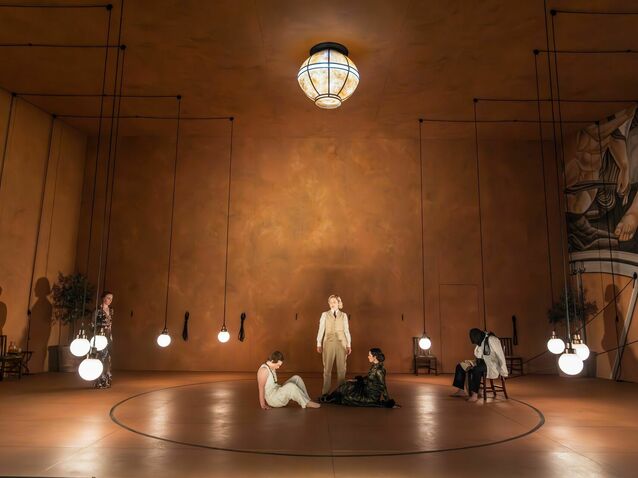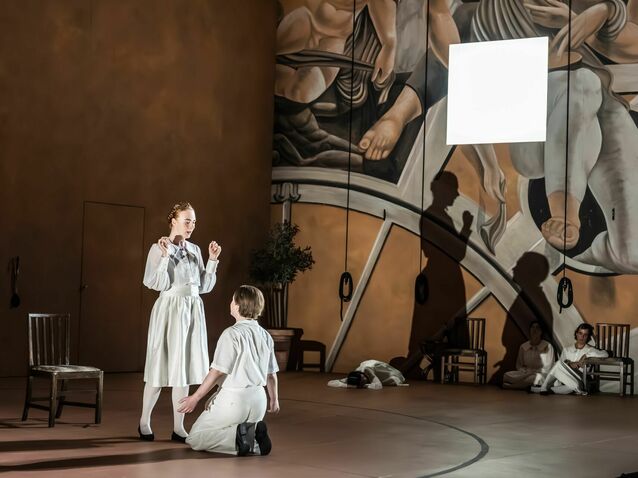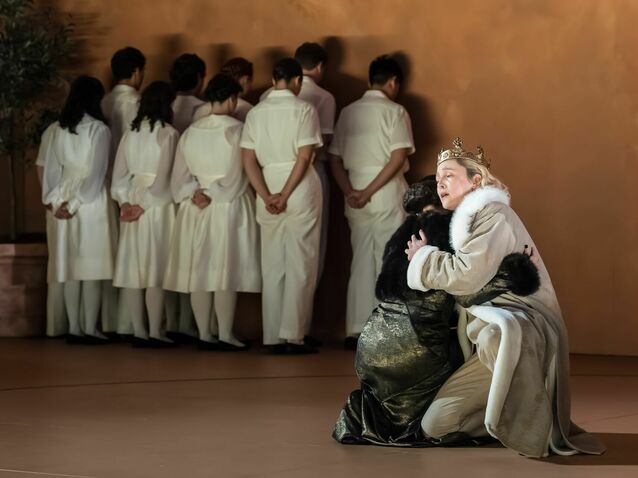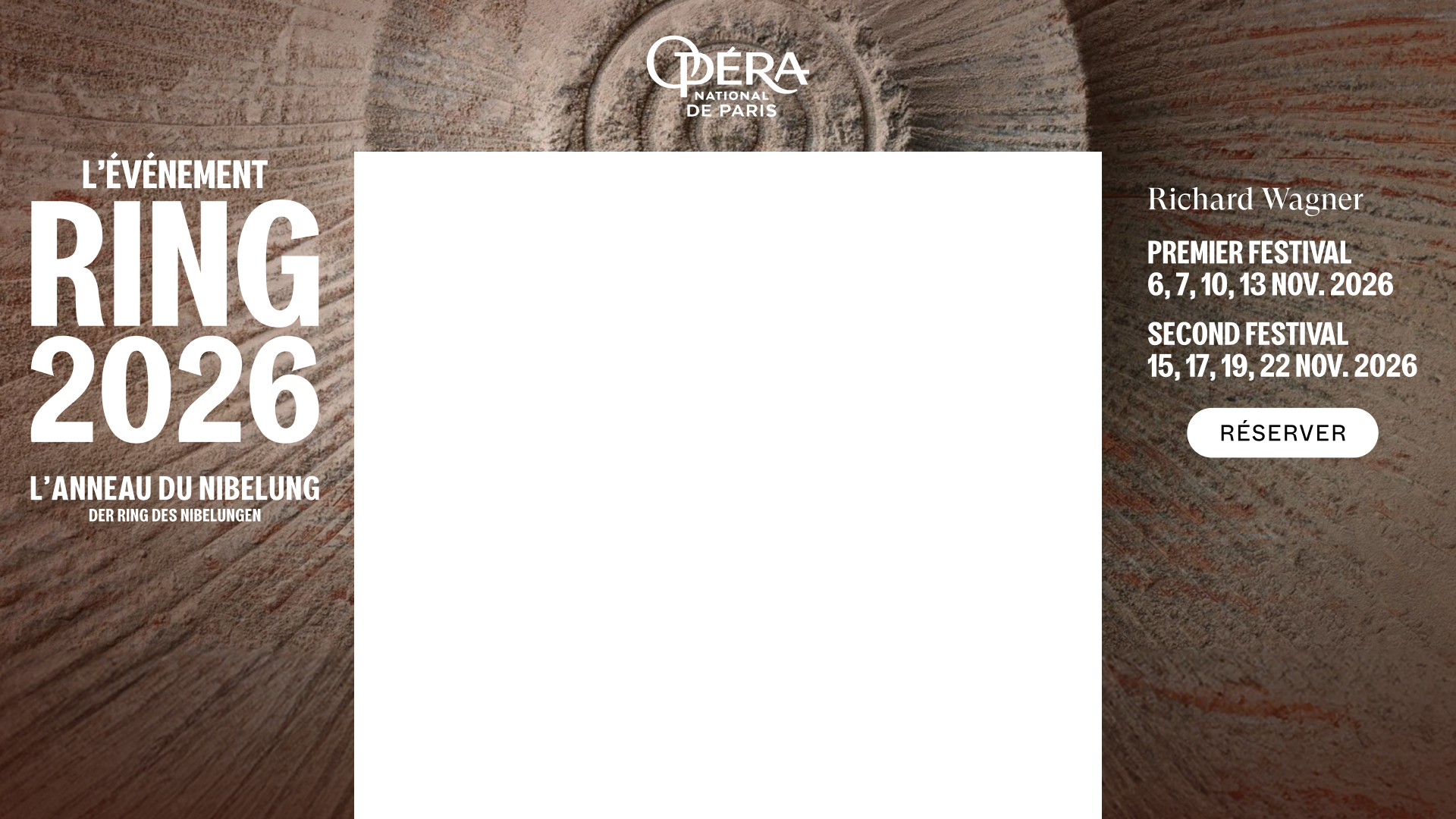 © Marc Brenner / The Royal Opera
© Marc Brenner / The Royal Opera
George Frideric Handel’s Giustino, HWV 37 has an Italian language libretto, the origins of which lie in one created by Nicolò Beregan in 1682. That was first set to music by Giovanni Legrenzi the following year, and was subsequently used by Tomaso Albinoni in 1711 (though his opera is now lost) and Antonio Vivaldi in 1724. The version that Handel used had been adapted from Beregan by Holy Roman Emperor Charles VI’s court poet Pietro Pariati in 1711.
The opera premiered at London’s Covent Garden Theatre on 16 February 1737, and received eight performances over its initial run. However, its first appearance in England since Handel’s time was not until 1963, and its current outing in the Royal Opera House’s smaller Linbury Theatre, which utilises a performing edition by Peter Jones, represents the first time it has returned to the site of its premiere.
Originally set in Constantinople in the early sixth century, the story begins with the widowed Empress Arianna celebrating her marriage to her new husband Anastasio before receiving news that they are threatened by a rebellion. Vitaliano has raised an army and is demanding that Arianna surrender to his bed, but Anastasio and Arianna remain steadfast, and determine to crush the insurgency.
Meanwhile, the ploughboy Giustino has a vision that great fortune awaits him, and subsequently rescues a woman from a bear. She turns out to be Princess Leocasta, sister of Anastasio, who acclaims him a hero, and invites him to support her brother and his wife in their fight. Vitaliano takes Arianna prisoner, but she still refuses him, so he orders her to be chained to a rock and fed to the sea monster who has been ravaging the country. Giustino and Anastasio, however, have set out to rescue her and when the monster rises to devour her, Giustino rushes in and slays it.
Arianna and Anastasio are reunited, while Giustino succeeds in capturing Vitaliano. This reinforces Leocasta’s love for Giustino, but when Arianna and Anastasio heap praise on Giustino, the jealous General of their own armies Amanzio takes the opportunity to further his own ambitions. He takes a sash covered in jewels belonging to the now imprisoned Vitaliano and gives it to Anastasio, telling him his wife is betraying him. Anastasio gives the sash to Arianna, who bestows it on Giustino in gratitude for saving her life, but Anastasio sees it as a sign of her infidelity and acts against her and Giustino.
Vitaliano succeeds in escaping, and prepares to murder a sleeping Giustino when the voice of his dead father warns him that Giustino is, in fact, his long lost brother, as a birthmark on Giustino’s arm confirms. Giustino and Vitaliano now form a pact to save the kingdom from Amanzio, who has defeated Anastasio and taken power himself, and Giustino succeeds in overcoming him. As Amanzio is executed, Anastasio is restored to the throne with Arianna, who forgives him for doubting her fidelity. A repentant Vitaliano is pardoned, and Anastasio appoints Giustino co-regent and gives him the hand of his sister Leocasta in marriage.

Esme Bronwen-Smith as Leocasta and Polly Leech as Giustino in Giustino © 2025 Marc Brenner
In Joe Hill-Gibbins’ production, Rosanna Vize’s set design draws its inspiration from Philip Guston and Reuben Kadish’s 1930s mural Physical Growth of Man. This can still be seen today in the City of Hope Visitor Services Center in California, and the part that is reproduced is the central section that shows figures representing the arts. This appears on one of the side walls of the box-like set with a window cut into it, while the resulting ‘missing’ square of the picture features on the opposite sandy coloured wall. The parts of the mural that are not shown here depict youth and energy to the left and decline and disappointment to the right, and this could be seen as reflecting the opera’s overall story. Through projections, Hill-Gibbins entitles what occurs before the interval as ‘Innocence’ and what happens after it as ‘Adulthood’. In line with this, he suggests that everyone experiences too much to return to the same state of ‘purity’ they were in at the start, and the final ostensibly happy scene leaves a bad taste in the mouth in this instance.
The set very much encloses the action so that everything is played out in something akin to an arena. The difficulty is that this removes much of the visceral thrill from the proceedings, and it is questionable whether the psychological drama that is striven for feels powerful enough to compensate. There is no ferocious chase by the bear, who instead holds Leocasta in an unwanted but hardly violent embrace. When Giustino confronts him he removes his mask to reveal that he is actually Amanzio, which says much in its own right but does not necessarily make for compelling drama as the entire episode feels rather sedate.
The eight strong chorus sounds very good, with its members being students from the Guildhall School of Music & Drama. They are frequently present and there is a Brechtian element to the staging as two of them dress to become the sea monster, which deliberately feels more comical than fearsome. However, their dual roles as participants in, and observers of, the action means that their purpose sometimes seems to lack clarity and focus.
The approach condenses the settings, so that everything more or less occurs in the same place. This impacts various plot points so that here the jealous Anastasio imprisons, rather than banishes, Arianna and Giustino, meaning that Vitaliano easily finds the latter rather than chancing upon him in the countryside. Similarly, in the original Anastasio and Giustino end up at the rock to which Arianna is chained after being shipwrecked, but that is not the case here and it does need to be as Hill-Gibbins’ focus is on the immediacy of the action. Similarly, Giustino normally captures Vitaliano when the latter returns to the rock as he did not know she had already been rescued, and decided he could not condemn her to so cruel a fate. Hill-Gibbins presents the episode slightly differently, and in the process asks us to consider who the monster really is.

Mireille Asselin as Arianna and Keri Fuge as Anastasio in Giustino © 2025 Marc Brenner
One ‘subtext’ that is played out particularly well comes when Arianna and Anastasio sing of their joy at being reunited after her rescue. This is presented so that one can see how Arianna shows Giustino a level of attention that could be misconstrued. Act III, which falls after the interval, builds on this to create an environment that feels more conducive to allowing the points it makes to hit home. In initially revealing the principals, even in scenes in which they would not strictly be present, but not the chorus, we often see events unfold, not as they really do but as others perceive them. There consequently looks as if there is some form of relationship between Giustino and Arianna because we are physically shown what Anastasio believes to be the case.
The production consequently grows in strength across the evening, while in direct contrast the musical credentials are superb from start to finish. Conductor David Bates elicits some extremely beautiful playing from La Nuova Musica with the attention to detail that is shown, and the level of polish that is achieved, actually being the means whereby the output possesses quite a visceral thrill. The score features a prominent role for oboe obbligato, which Handel wrote specifically for the composer and oboist Giuseppe Sammartini. On this occasion, Leo Duarte performs it to a very high standard, while an additional element of theatricality and grandeur is introduced by seeing some of the brass players perform from the stage on occasions.
Polly Leech is an outstanding Giustino as her mezzo-soprano conquers every phrase in compelling fashion, and often reveals notable depth. Keri Fuge (Anastasio) and Mireille Asselin (Arianna and La Fortuna) both display exquisite and exceptionally well shaped sopranos. In relative terms, Fuge’s is the slightly more radiant while Asselin’s is just a little darker, and together they complement each other extremely well. Esme Bronwen-Smith reveals a highly sensitive and persuasive mezzo-soprano as Leocasta, while Benjamin Hulett asserts his tenor to tremendous effect as Vitaliano. Jonathan Lemalu, with his firm and secure bass-baritone, provides excellent support as Polidarte, while countertenor Jake Arditti quite simply gives a superlative performance as Amanzio. When such strong musical credentials combine with a staging whose effectiveness grows across the evening, the results are certainly worth experiencing.
By Sam Smith
Giustino | 7 - 18 October 2025 | Linbury Theatre, Royal Ballet and Opera, Covent Garden
the 09 of October, 2025 | Print


Comments